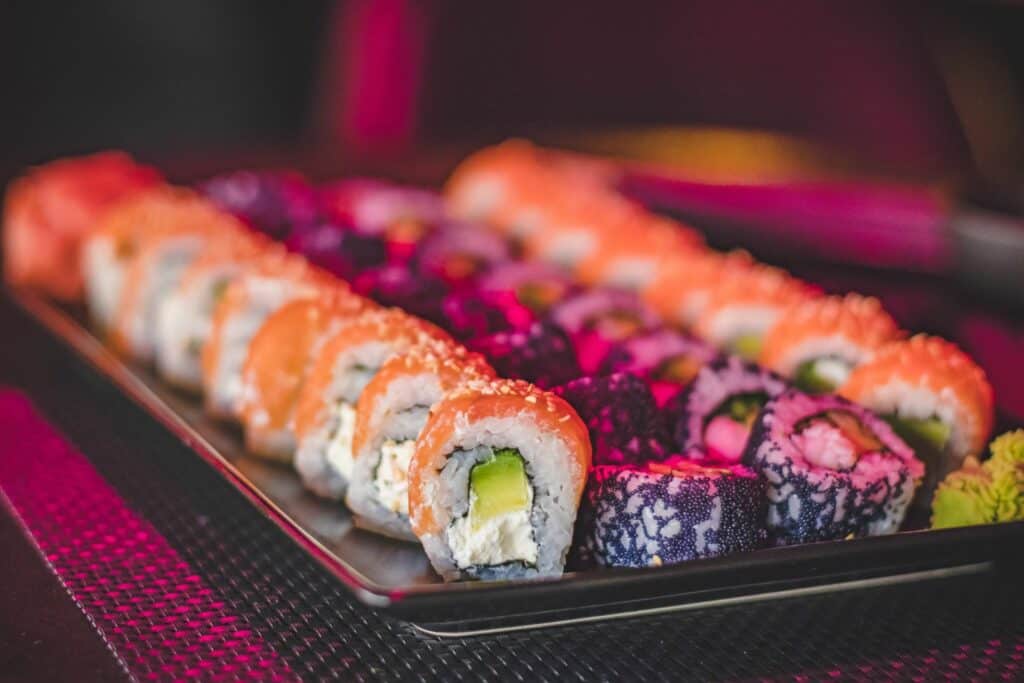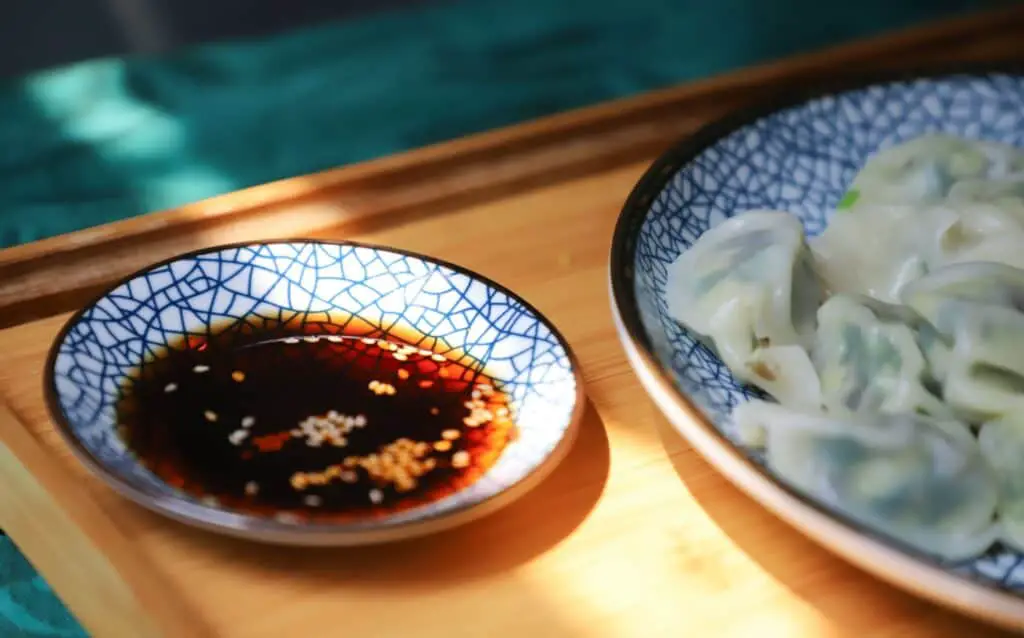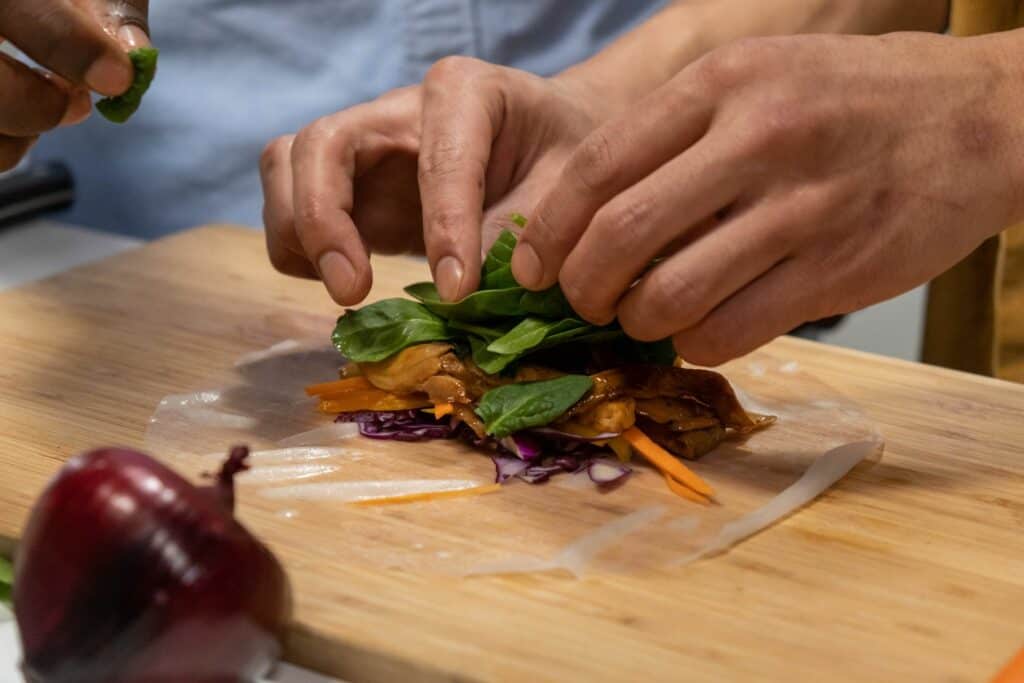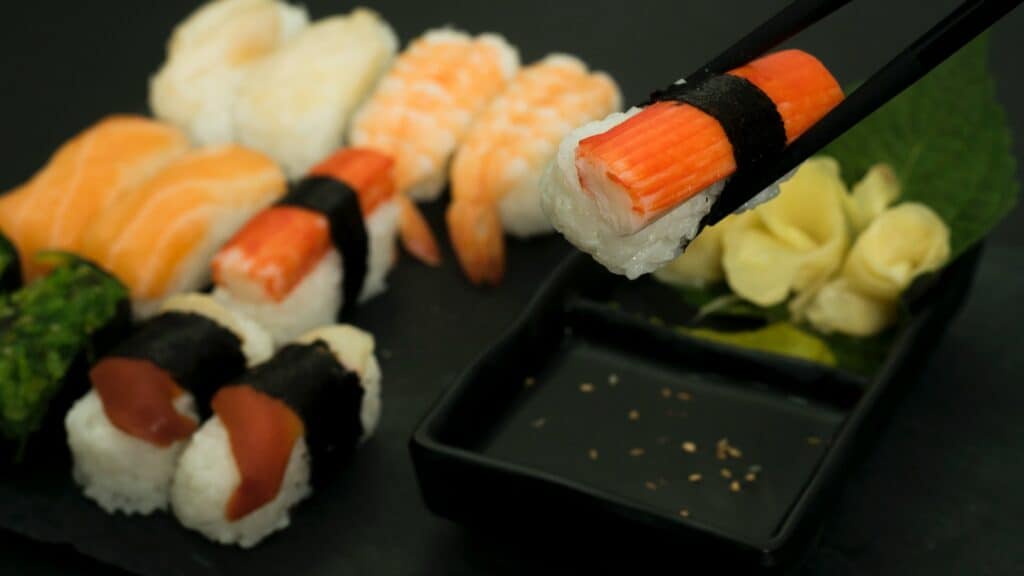People with gluten intolerance have a tough time finding gluten-free restaurant meals and delivery. So many ingredients contain gluten that it can seem impossible to find those that don’t. Fortunately, sushi lovers who wonder if sushi rice is gluten free can take a deep, relieving breath.
Is Sushi Rice gluten free? Yes, sushi rice is gluten free as rice naturally doesn’t contain gluten. A person with celiac could have a reaction to sushi only if one of the other ingredients combined with rice contains gluten. Freshness is expected in sushi restaurants, but some may not use exclusively gluten-free options. It’s always good to check with the restaurant first.


If you’re curious about more than just sushi rice, you can read about some other classic sushi ingredients that may or may not contain gluten. You can even make your version once you learn which ingredients are safe for you or anyone with celiac and allergies.
Is Sushi Rice Gluten Free? How to Enjoy a Delicious Sushi Meal When You Have Celiac Disease
Whether white, brown, or wild, rice doesn’t have gluten in its natural form. This is excellent news for anyone looking to introduce carbohydrates into their diet without feeling discomfort from gluten or getting severe reactions. People allergic to gluten typically have celiac disease.
If you have celiac disease, you should be able to enjoy regular delicious sushi in any Japanese or sushi-serving restaurant since the main ingredients – rice, fish, and vegetables don’t have gluten in them.
Is Sushi Always Gluten Free?
Sushi won’t always be gluten-free, though. It depends on the kind you want to eat. If you order a classic salmon or tuna roll, the meal will ultimately be gluten-free.
However, soy sauce, white vinegar, tempura batter, ponzu sauce, and mayo-based sauces all have gluten since there’s some form of wheat or sugar in each.

Is Sushi Rice Paper Gluten Free?
Seaweed or nori is gluten-free, but its taste may not be for everyone. That’s why rice paper is a great alternative, taste- and health-wise. It’s made from rice, so naturally, it doesn’t have gluten.
However, if you combine it with vinegar or soy sauce which contains some wheat, any allergic or sensitive restaurant guest will know.
Vietnamese spring rolls are made with rice paper, and they’re very easy to make at home. If you’re not about rolling sushi, try making spring rolls. Just add some vegetables, roll them in the paper, and fry.
Is It Better to Use Rice Paper or Seaweed for Rolling Sushi?
The classic sushi recipe calls for nori or seaweed, so it’s always better to eat sushi with it. Seaweed is the greenish-black edible sushi wrapper, and in many Asian countries, it’s also consumed as a snack.
It’s got a natural savory taste and umami flavor, so it doesn’t have to be salted or dipped in any additional sauces to be tasty. For rolling sushi, seaweed is the ultimate finishing touch, but you can always replace it with rice paper.

Does Imitation Crab Have Gluten? What Are Good Replacements For It?
Imitation and real crab aren’t the same types of meat. The imitation is dyed, starched, and flavored fish parts, so it’s not gluten-free, and while many restaurants emphasize using it, some won’t. Ask for the real deal in your meal or order something else just to be safe.
Ingredients That Can Replace Imitation Crab
The first obvious replacement choice for imitation crab is real crab. The imitation is typically made from Alaskan pollock fish meat, so you could also use Alaskan pollock fillets as a replacement.
Vegan imitation crab replacements include hearts of palm, shredded jackfruit, tofu, and artichoke hearts. Shredded jackfruit has a texture similar to pulled pork and is often used as a meat substitute, while tofu is the most common substitute and main ingredient at the same time.

Are Cucumber Rolls Gluten Free?
Cucumber is one of the healthiest vegetables out there. It’s mostly water, yet very filling, and most importantly, it doesn’t have gluten. Cucumber rolls can be gluten-free if all the other components are too.
Cucumbers are a common ingredient in sushi, and the most popular rolls containing cucumbers are the California kind. These are safe to eat as long as the crab meat is genuine and not imitation. You can safely use cucumbers at home to create rolls, which will taste fresh and healthy.
You Can Eat Fresh, Gluten-Free Sushi as a Vegan and Non-Vegan
Most sushi is safe for people with celiac disease. If you don’t like sushi, you can take some ingredients and create a homemade version to make it more tolerable. If you wish to try the vegan versions, get some tofu or jackfruit and cook away.
The safest way to avoid gluten in meals is to cook them yourself. Still, there will be times when you won’t feel like cooking, and those are the perfect moments for eating some sushi.